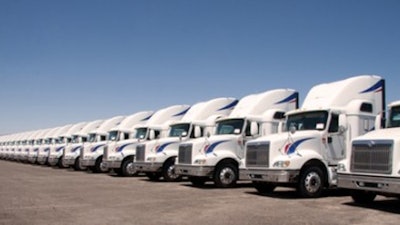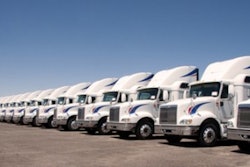
A logistics management software helps the business simplify its logistics operations by taking control of planning and implementation. Whether it be administrating inbound and outbound transportation, warehouse and fleet management or third-party logistics, logistics management software will ensure the entire process from shipping to delivery of the finished product to the customer is streamlined.
One of the main features that ensures seamless operations is route planning. Whether planning for e-commerce, retail, fast-moving consumer goods (FMCG) or consumer packaged goods (CPG), rising fuel prices and customer’s demand for faster deliveries require the use of route planning. While route planning in layman terms ensures planning the best route to get the items delivered, that's not all. Let’s dive into the four key planning objectives considered when planning the best routes.
Optimize fleet capacity. This functionality helps optimize fleet utilization to ensure all orders are completed with maximum fleet efficiency. This will ensure the least number of delivery associates/ vehicles are used to complete the orders. The logistics management software here will consider fixed and variable costs associated with delivery associate/vehicle.
For example, if fixed cost is 0 and variable cost is 15 per Km. Trip cost = Fixed Cost + (Variable Cost * Total Distance Traveled in a Trip) + (Transport Time Cost * Total Time Delivery Associate is traveling in the Trip) + (Waiting Time Cost * Total Time Delivery Associate is not traveling in the Trip)
Optimize time and distance. If you want orders to be optimized based on time and distance that a delivery associate or vehicle has to travel, this option is more beneficial for faster delivery.
Balanced allocation. This functionality allows you to assign orders with equal focus on trip time or capacity. It assigns orders based on total planned time for the delivery associate to complete the orders or based on capacity i.e., total time or units or weight or volume of orders per trip.
Sequence milestones. This will help dispatchers optimize the sequence for which orders are to be assigned to delivery associates. The delivery associate capacity and delivery time window are the only constraints considered by the logistics management software. This is the way to manually enter the route plan, overriding the pre-set data.
Route constraints when planning routes
Customer address considerations. This setting will help plan deliveries based on customer address preferences. It includes parameters like customer break time, customer service time, location restriction and nearby vehicle preference.
When considering customer break time, the system will ensure there is no pickup/delivery carried out within the set timeframe. For example, if a customer wants to get the order delivered between 12-3 and 5-6, the 3-5 time period will be considered as the break time.
Customer service time weighs in parameters like parking time, time for loading and unloading to be considered when route planning to ensure items are delivered to customers on time.
Location restrictions allow the route planning engine to select the appropriate fleet that can cater to the customers’ location. Similarly, toggling a switch to give preference to nearby vehicles will assign orders to vehicles based on above preferences.
Consider DA availability and milestone time window. This setting helps assign drivers or fleet based on delivery associate availability and/or milestone time window.
Return to branch after order completion. If you want delivery associates to return back to the hub/store after order completion, these timings will be recorded to ensure driver shift timings are adhered to (if any).
Route restrictions. If you want delivery associates to travel a specific route and avoid certain routes, this setting can be useful. One can choose between avoiding highways, tolls and ferries.
Maximum distance cost. Toggling this switch enables the dispatcher to set the maximum distance the delivery associate can travel from the branch until the last order of the trip.
Maximum number of stops. This constraint helps set the maximum number of stops that a delivery associate can travel during a trip.
Fleet constraints when planning routes
Postal code preference. This constraint helps the logistics management software assign delivery associates based on their preferred postal code. When adding delivery associates to the system, postal codes can be defined for seamless assignment.
Minimum capacity utilization. This setting will ensure efficient fleet management.
Milestone priority. Prioritize routing engine order milestones and plan delivery accordingly.
Mode of travel. At times, you might want your delivery associates to deliver via foot. Hence the option to plan routes based on driving (giving driving directions) and walking (directions based on pedestrian paths and sidewalks).
Delivery associate skill sets. When assigning drivers for delivery of specific items, there might be a need for certain skill sets. For example, delivery of frozen items requires different skill sets than normal grocery delivery. When adding the delivery associate to the system, they can be attached to skill sets to complete specific delivery tasks.
Resource loading time. This constraint considers the time taken to load orders into the vehicle. This helps fix accurate ETA to ensure maximum customer satisfaction.
Resource shift time. This functionality helps the route planning engine assign orders to delivery associates based on their shift timings.
Service hours. Each country has its own compliance to working hour regulations. To meet this requirement, the dispatcher can toggle this constraint to ensure policies are met.
Fleet sharing. This constraint helps sharing of fleet belonging to the parent branch fulfill orders for multiple branches.
Conclusion
All these parameters show that route planning doesn’t just rely on getting items delivered from Point A to Point B, but numerous factors that can impact getting the item delivered. So, when you get the item delivered on-time, you know what factors contribute to ensure customer satisfaction. When planning to purchase an advanced logistics management software, check out the different flavors route planning can offer. Over time, you can save on fuel costs with efficient routing, find analytics of fleet and use automated schedulers to schedule routes to remove manual intervention.



















